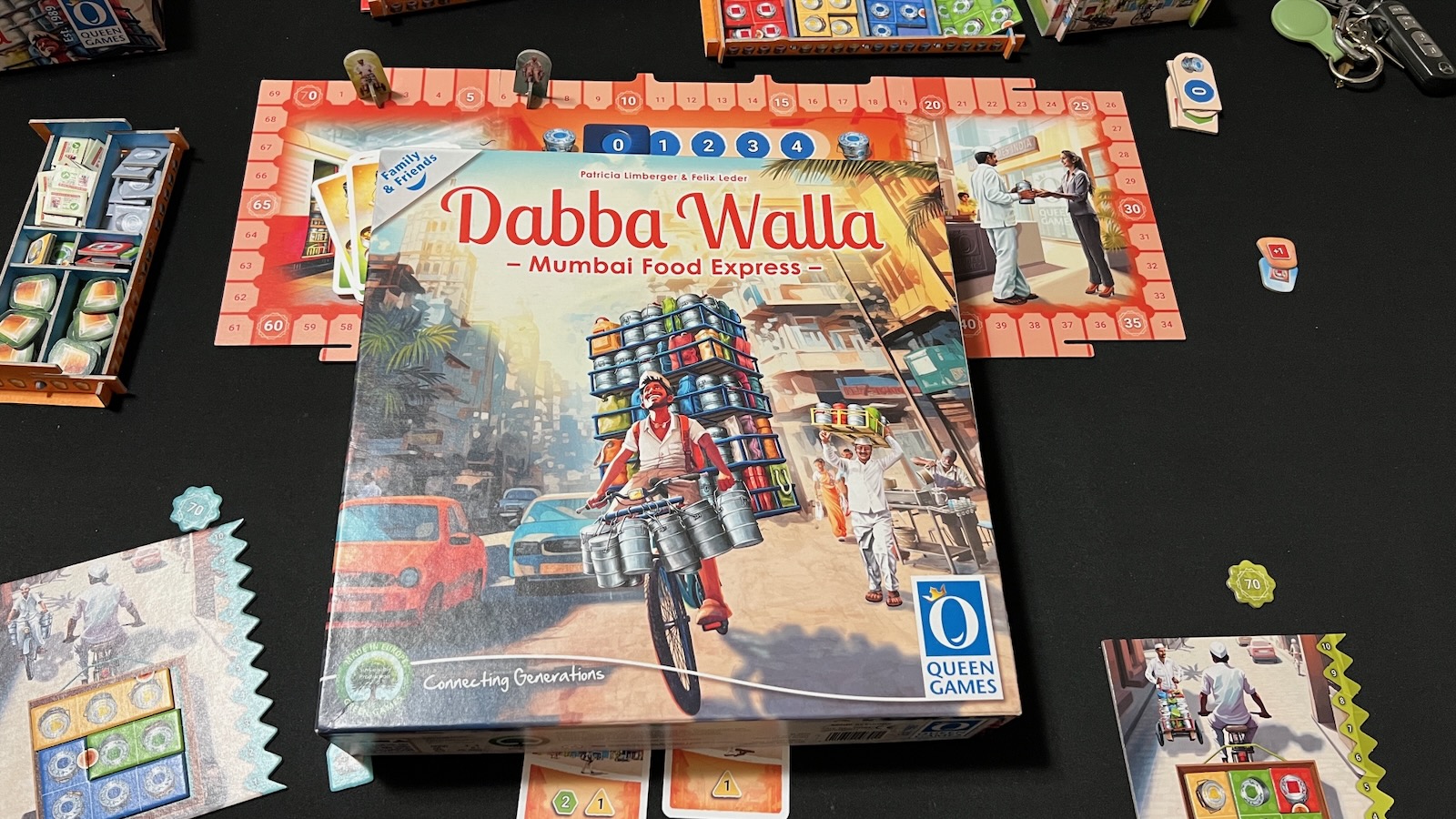My wife and I love different foods from around the world. From Korean to Mediterranean to Jamaican, we try to find new local places and look for upscaled versions when we travel. One of our favorites is the cuisine from India and we have been working our way through some local menus in the past few months as well as trying to cook some recipes at home. In the game of Dabba Walla, I feel like the smells and tastes we enjoy pop off of the cardboard and leave us wanting more.
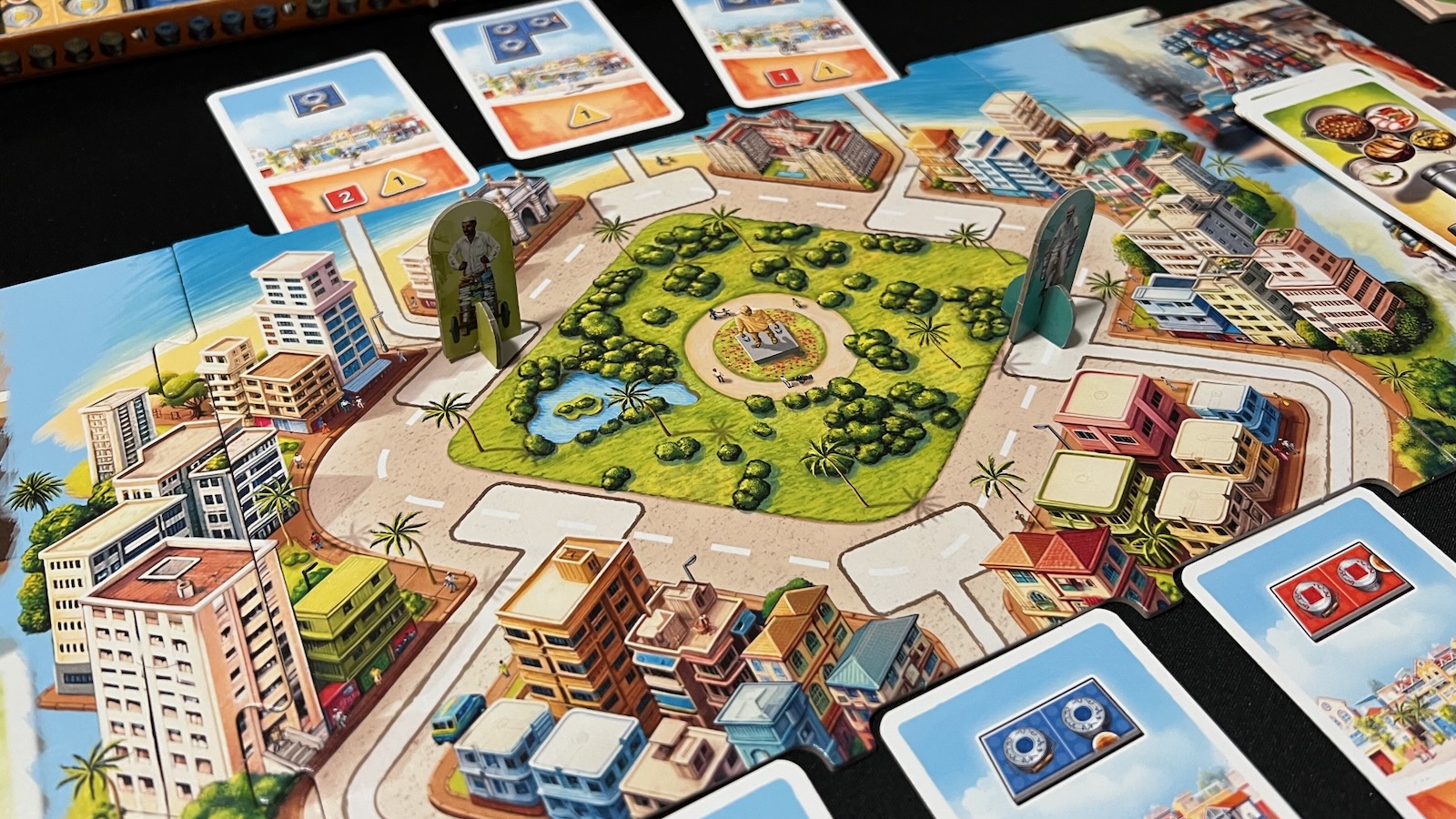
Dabba Walla: Mumbai Food Express is a family game from publisher Queen Games and designers Patricia Limberger and Felix Leder. In Dabba Walla, players take on the role of delivery workers from the streets of Mumbai taking meals to working individuals all over the city with a 99.999% efficiency! In the first half of the game, players wander the streets of Mubai collecting dabbas, and containers of food, and organizing them on their vehicles. In the second half of the game, players will deliver orders and receive tips to determine the winner of the game.
When setting up, players will decide as a group which of the four grids they will use in the game. Each grid offers unique difficulties and represents the real-life vehicles dabba wallas use to deliver the meals. Players will start with 6 ticket tokens and a level marker on their boards. In the center of the play space, a board representing an area of the city holds six cards representing different locations. Players also have a standee representing their worker which will be placed in the first turn and will start the game with a hand of two cards.
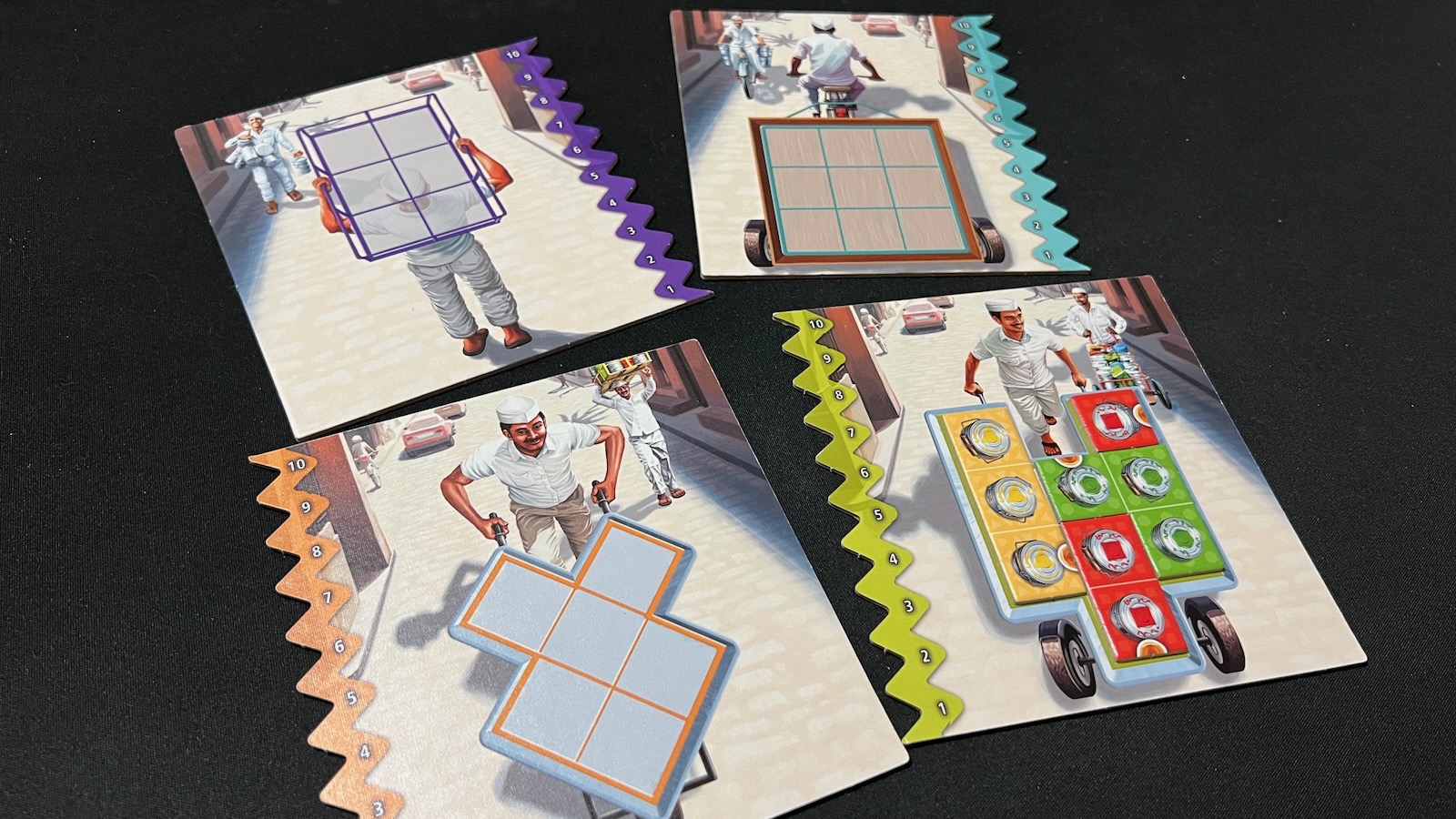
On a turn, players will move their piece clockwise or counterclockwise around the board with their first movement being free. Players will take the card corresponding to the place where they finish their movement. To take extra movement, players must expend their ticket tokens by placing them on the cards they pass. Each card features a tile that will be taken from the supply during Phase 1 and a tip value that will come into play during Phase 2. Players also receive any ticket tokens on the cards that may have been left on previous turns. Cards will be added to a player’s hand and they will then choose one of three to play, receiving the corresponding token which will then be placed on their grid.
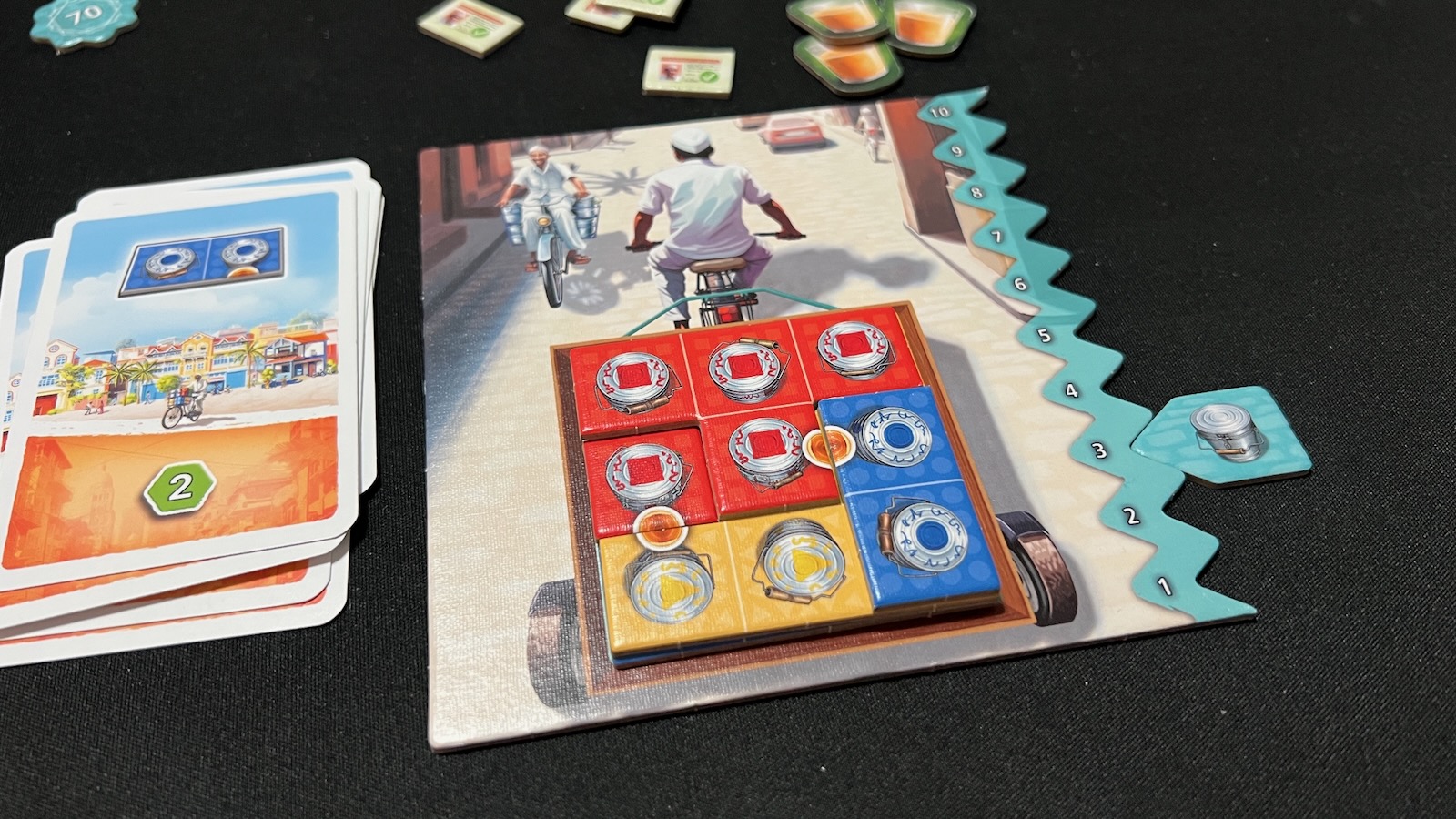
Tiles received in the game will be placed on the vehicle boards representing the player’s colors. Players will try to utilize space and can stack tiles on top of each other as long as they are supported by tiles underneath. Players can take empty tiles for a penalty to fill in any blank spaces. Each layer of tiles will add another scoring round a player can participate in during Phase 2 of the game. As tiles are placed, players can also match up to halves of a chai tea symbol. When matched, players will draw a special tile from a common supply. These tiles give players bonuses in either Phase 1 or Phase 2 of play. Phase 1 continues with players taking exactly 13 turns each. Players will then discard their final two cards to get the corresponding tiles.
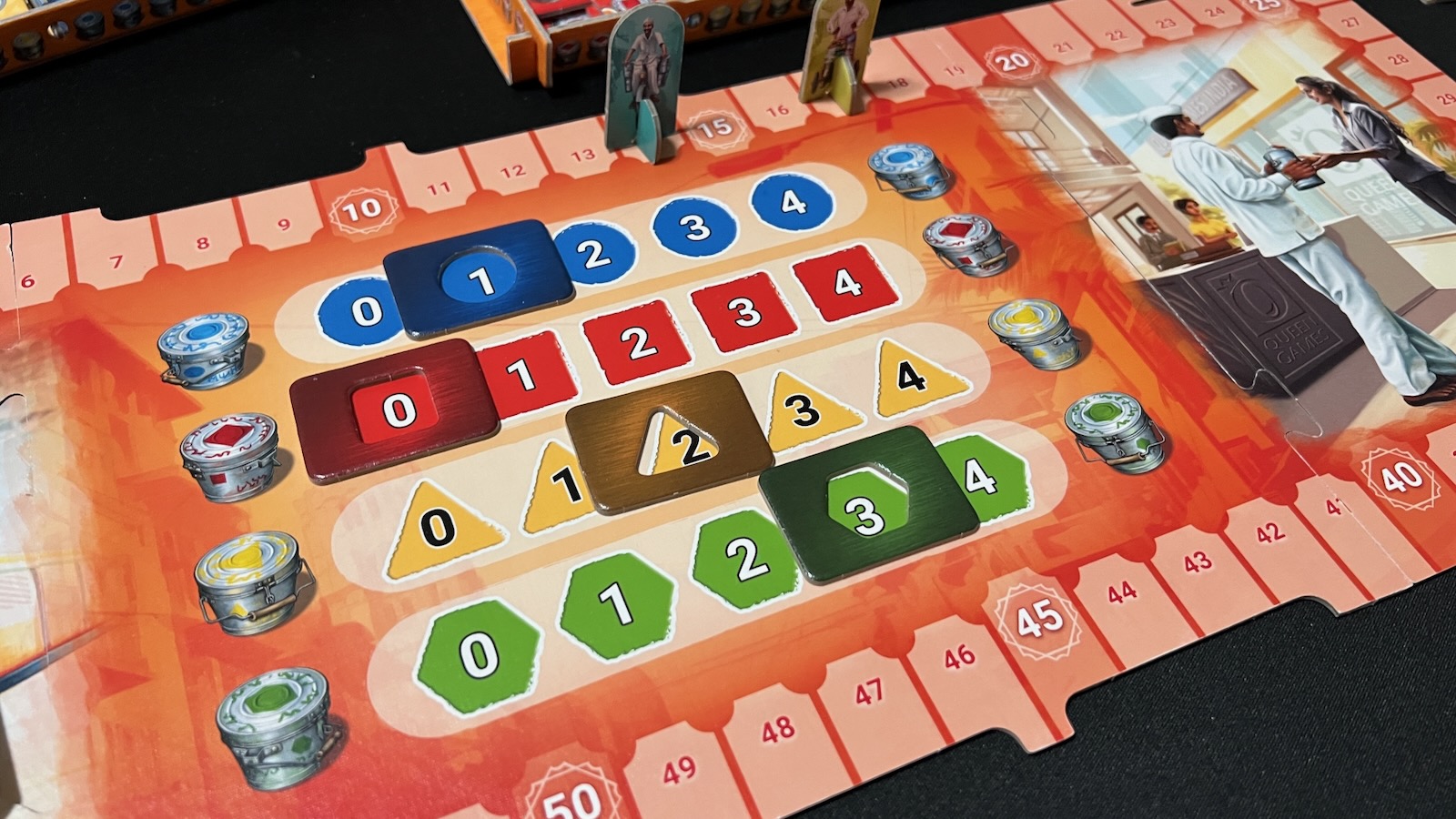
Phase 2: Delivery is the scoring phase of the game. The main board is flipped over and player pawns are now used to track scoring, which comes in the form of tips for excellent delivery service. Four markers are added to a market which will be adjusted to show the current market value of the different colored tiles. Phase 2 will take place in rounds equal to the highest level someone has stacked on their vehicle. Each round, players will choose one of their cards and any chai tiles they wish to play, placing them face down on the table. At the same time, players will reveal their cards adjusting the market tracks based on the values printed on the cards. Then, players will count all the individual squares of each color if they have any tiles on the current level. Players will multiply their squares by the market value and move their pawn around the board to track the tips they earn. Each round, the market is reset to zero and rounds will continue to be scored and the player with the most tips at the end of the game wins!
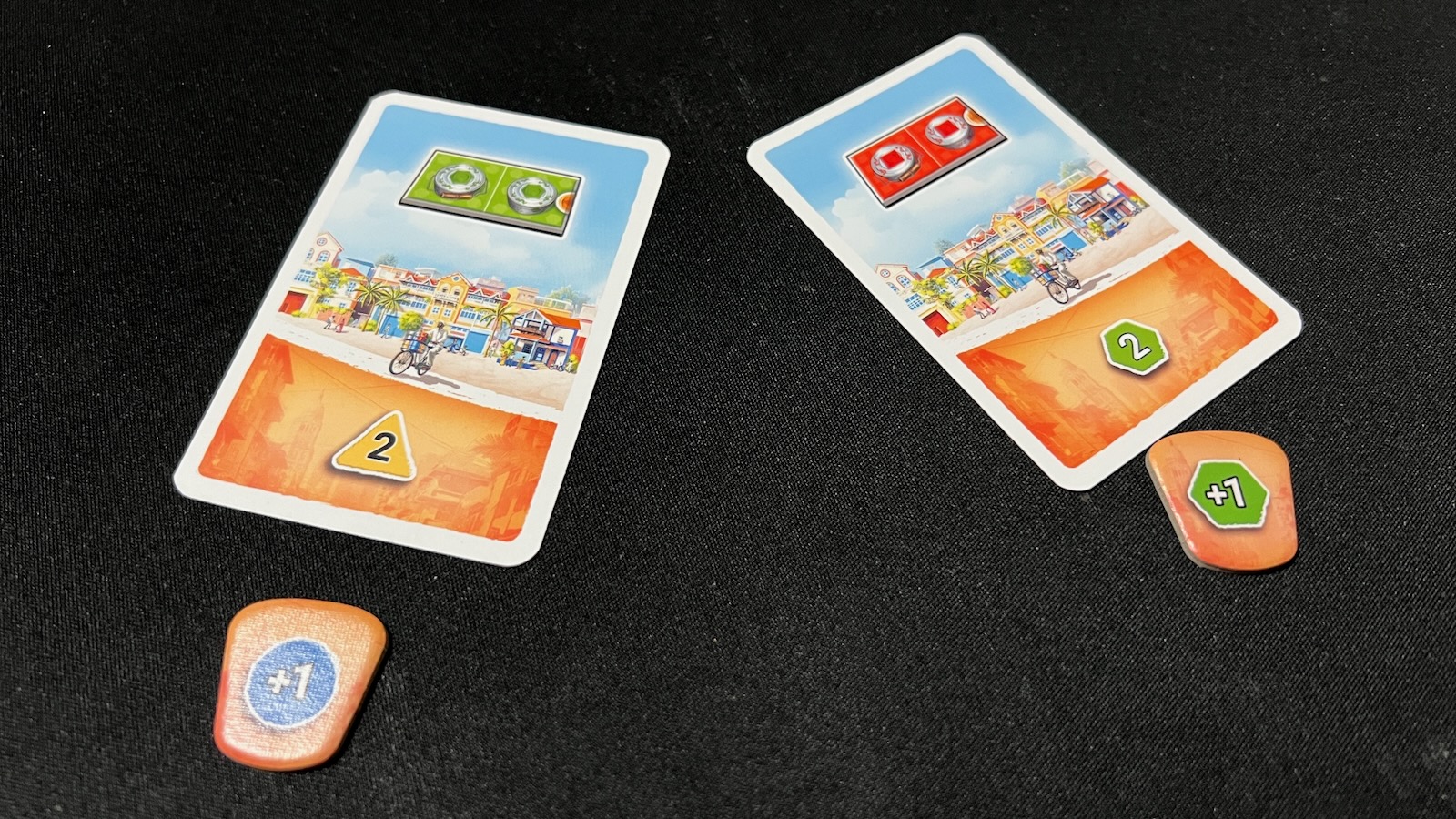
The game comes with two additional modules that players can add to their games. In Module 1, players will randomly pick two colored zero tiles, each representing one of the four colors. During the delivery phase, the first tile drawn is added to the beginning of the track, adding a second zero space, making it harder to raise the value of that color. The other tile covers the “0 and 1” spaces, making it easier to boost the value of that color. In Module 2, players will pick one of three double-sided cards to add another scoring condition during the delivery phase. These scoring conditions give points for different tile configurations and stocking chai tiles.
Overall Thoughts
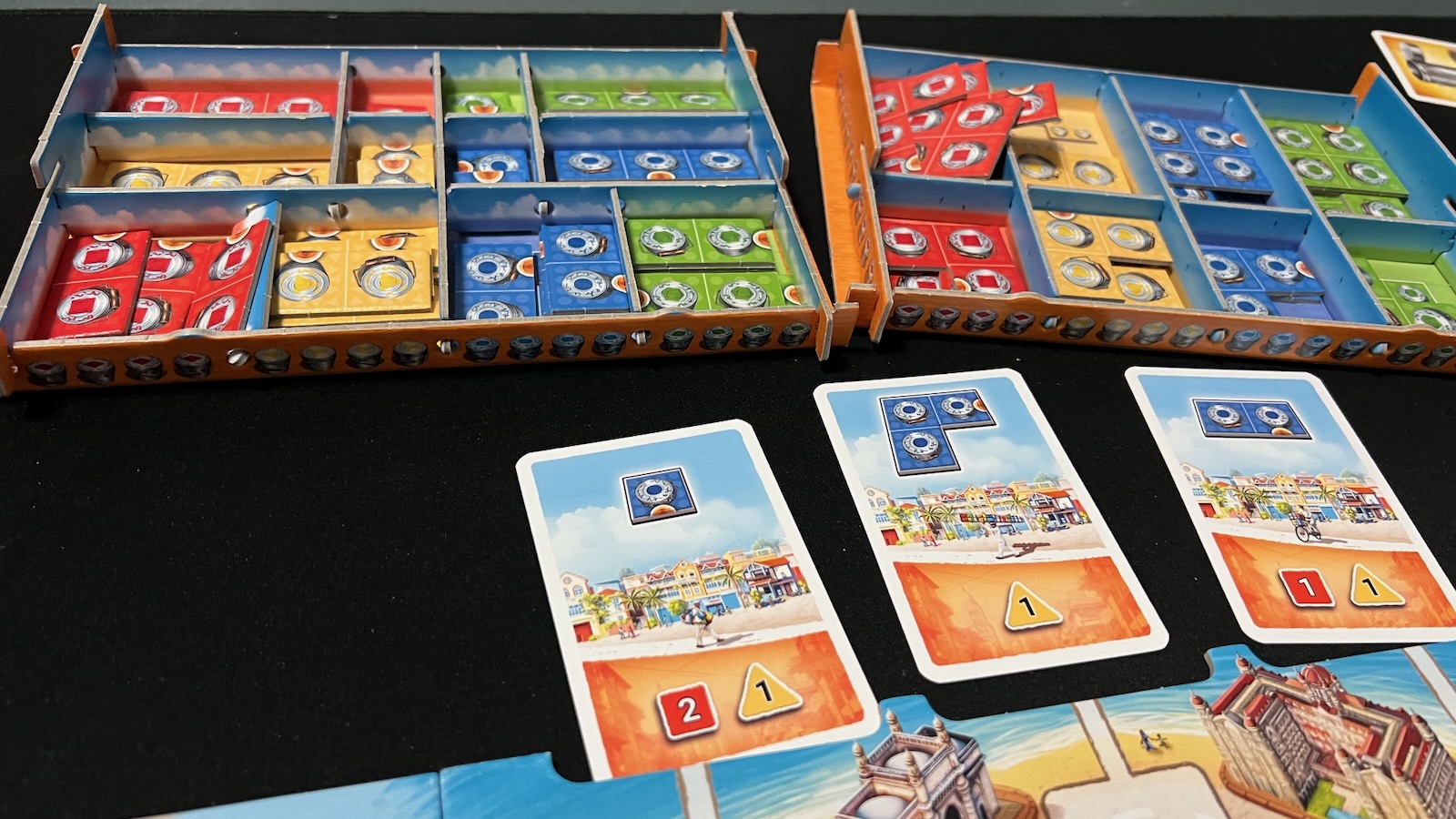
The production of Dabba Walla is one that I wish more games would use. The organization system consists of multicolored cardboard that serves as handy trays to organize the game space. Each tile and card has its own storage location, making setup and teardown of the game simple and quick. The tops of the trays, once removed, interlock together to make the central game board, and reminders of the phases of the game are printed to help with game flow. There is not one bit of plastic in the game. The rulebook is well laid out and makes it easy to assemble the storage, learn the game, and get it to the table. Another fantastic addition is the backstory of the Dabba Wallas and how the theme works throughout the game. There is even a QR code linking to a recipe for an authentic Indian dish. The copy that we were given to review was used many times to demonstrate the game to attendees in a recent condition and was well-worn once received. I would recommend some glue to reinforce the standees and the storage boxes after construction.
The gameplay is engaging and easy to learn. Players will need to diversify their options as each level is going to have a variable market. Repeat players learn to pay attention to what their opponents are placing on the different levels to either emulate or diversify their offerings. In the delivery phase, players can bolster or tank different colors to suit their game or affect their neighbor’s offerings. The game scales well to different player counts by manipulating the amount of cards used for each game. While easy to pick up and learn, the game is probably not one that I will come back to time and time again. The theme is very specific and will appeal to specific populations, but it didn’t pack the punch needed to get off the shelf in a world of
Dan is an educator from Colorado. Growing up as an Air Force dependent gained him lots of new perspectives on the world and a love for making new friends, especially over a good board game. When not at school or playing a board game, Dan is probably at the gym, attending a local sporting event, or performing or attending theater. Dan loves heavy euros, deck builders, living card games, and great solo rules.

Dabba Walla is a great family game that would serve as a great gateway game for younger players. This game would be great for families interested in the theme and looking for their next step in different mechanics in tabletop games. The theme oozes throughout the game, but may not appeal to players unfamiliar with the culture or cuisine presented in the game.
PROS
- Inviting visuals and colors throughout the game
- Self-contained and efficient game components and storage
- Easy to teach and get to the table
CONS
- Niche theme
- The gameplay lacks the staying power punch
See below for our list of partners and affiliates:
